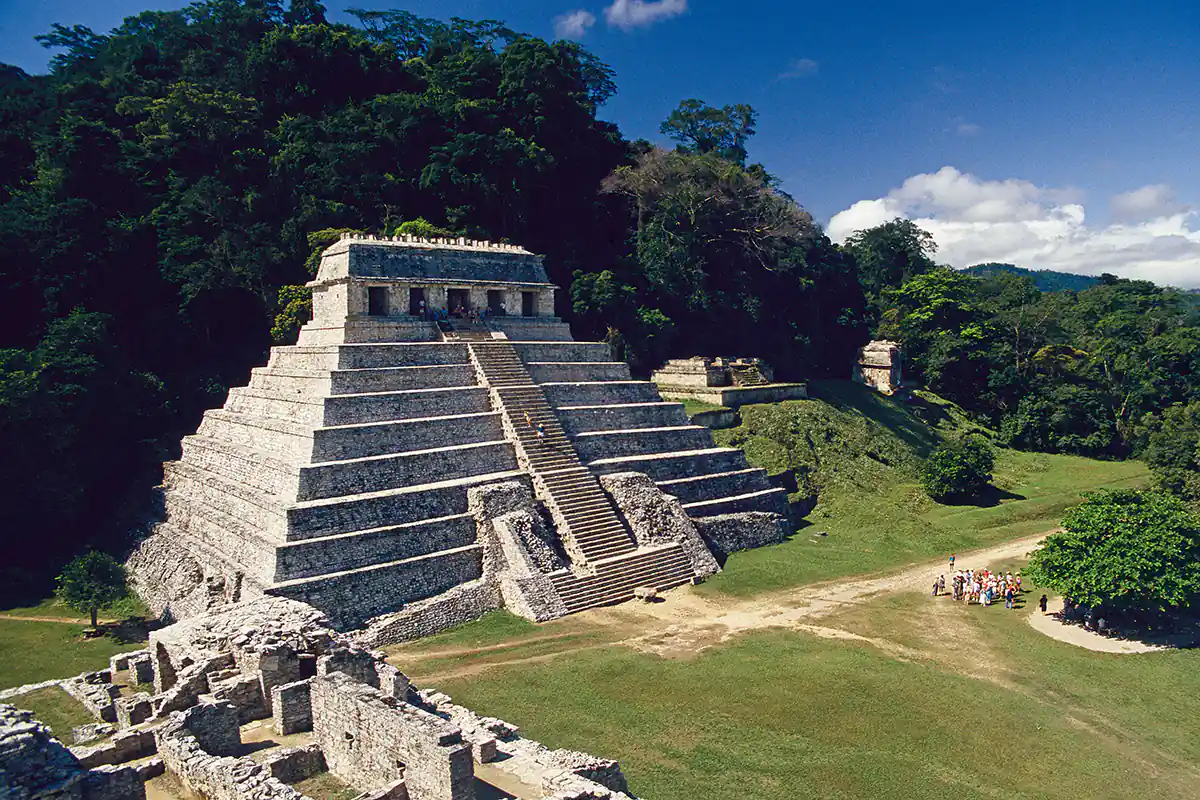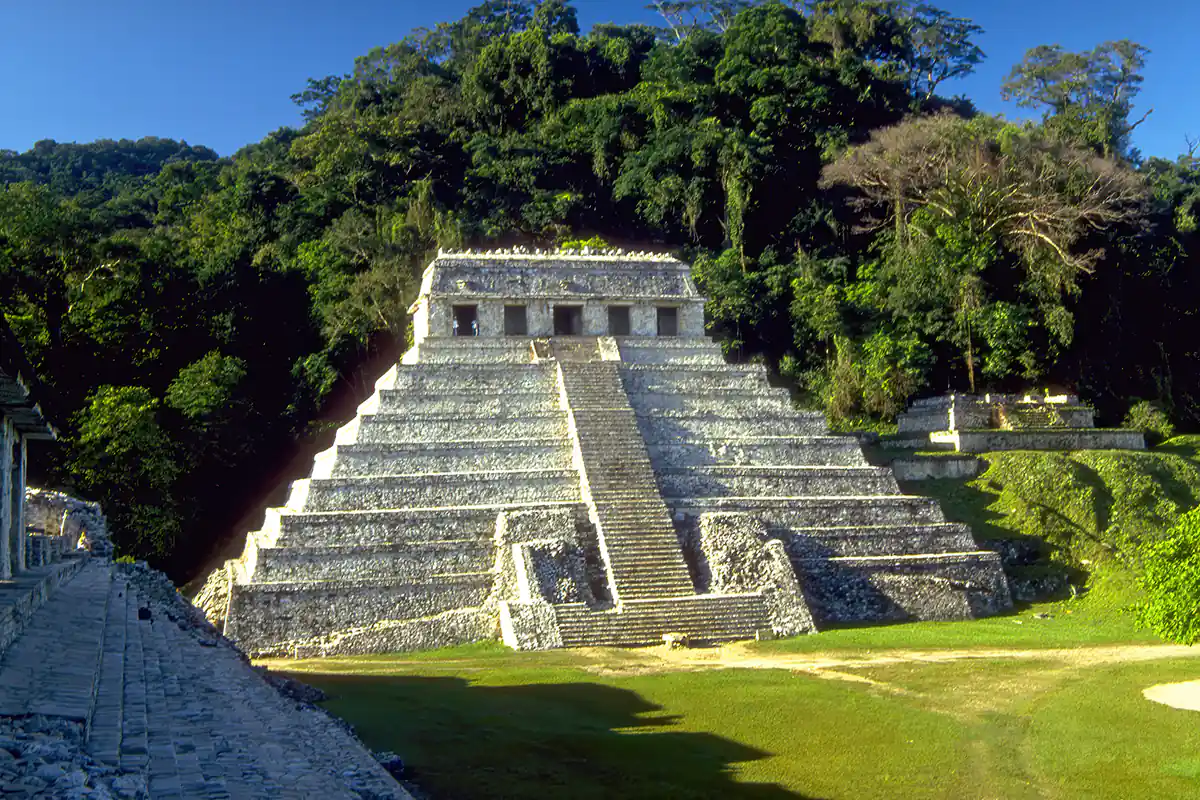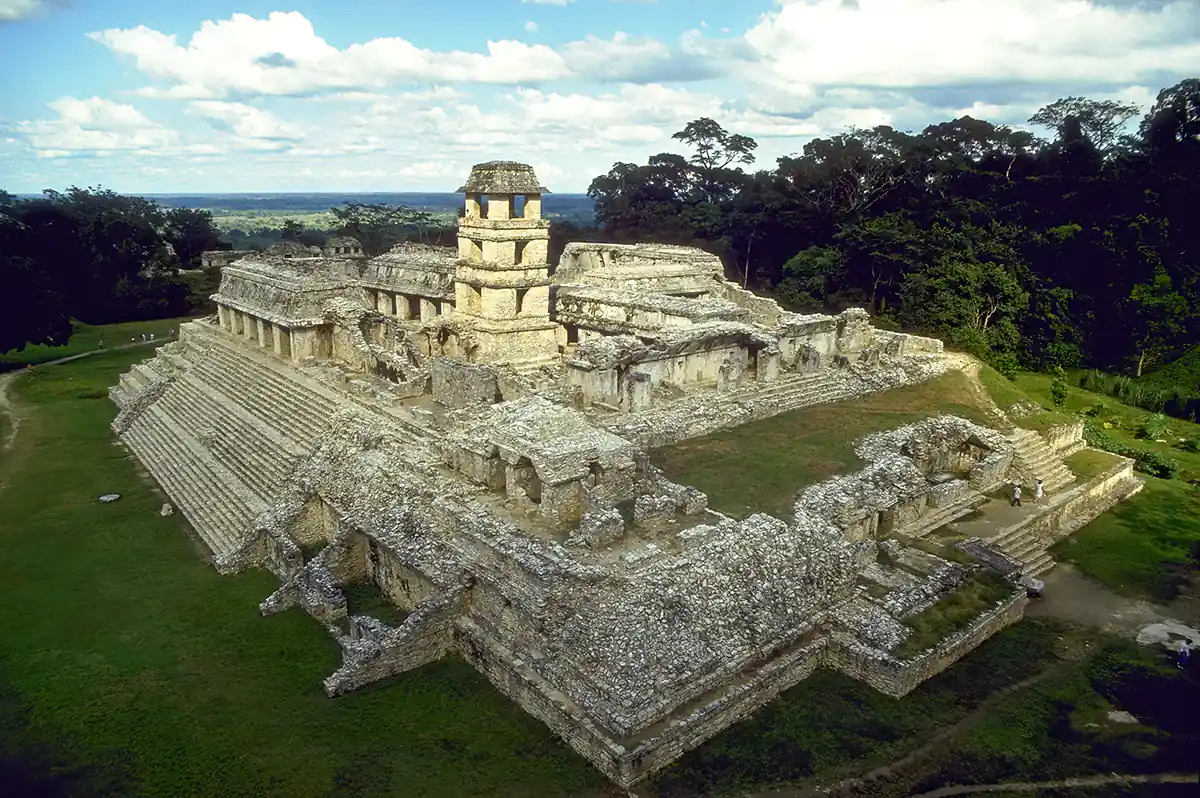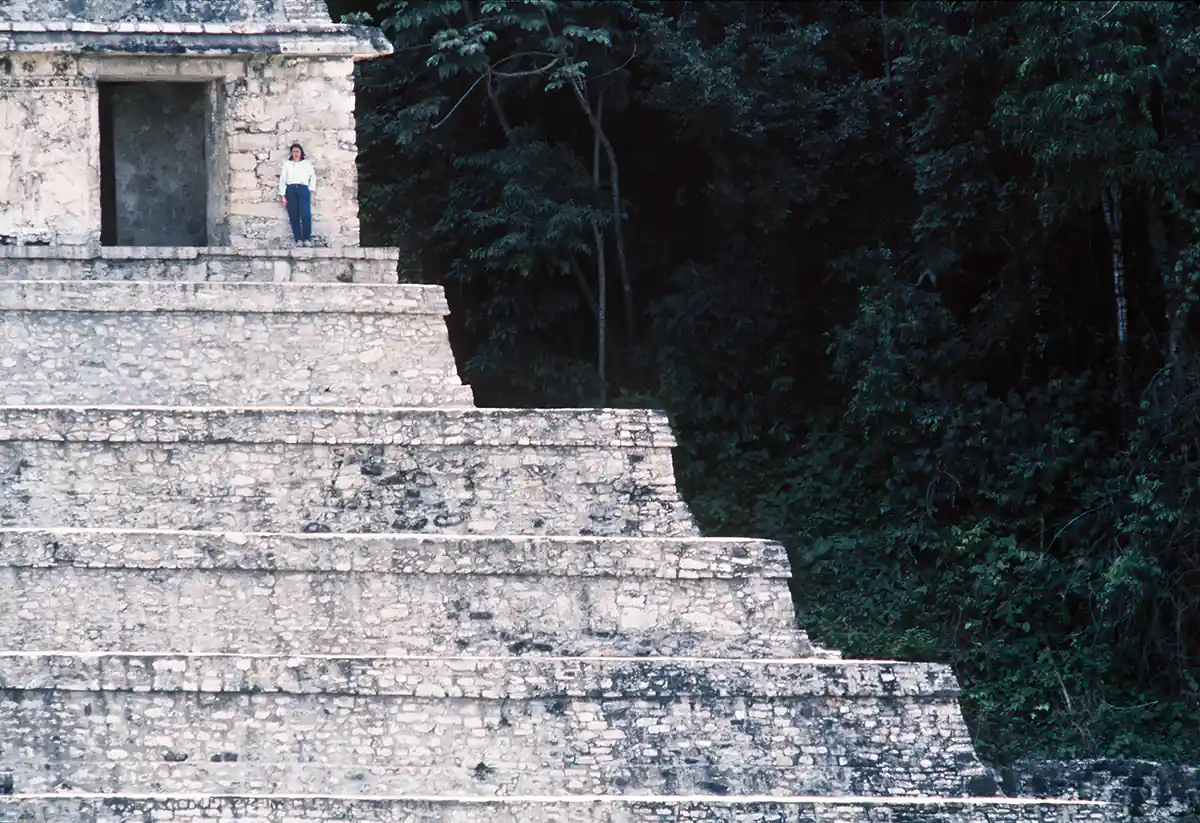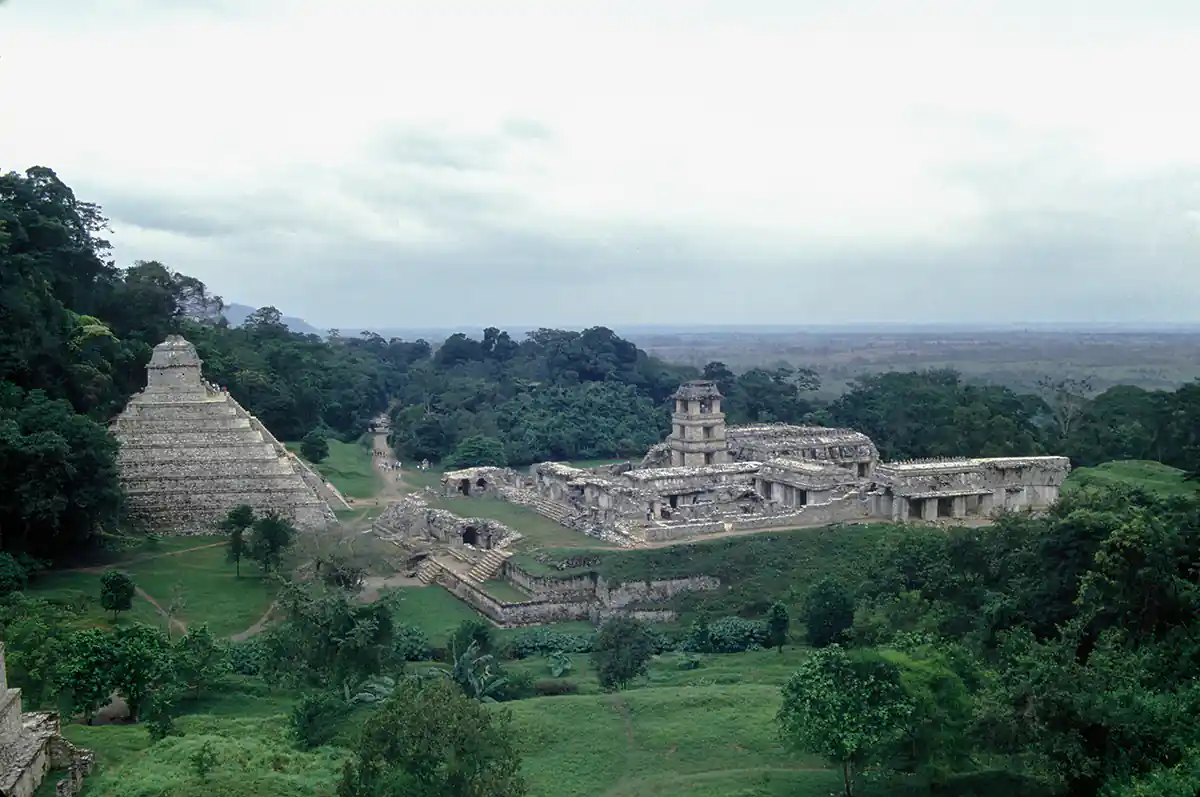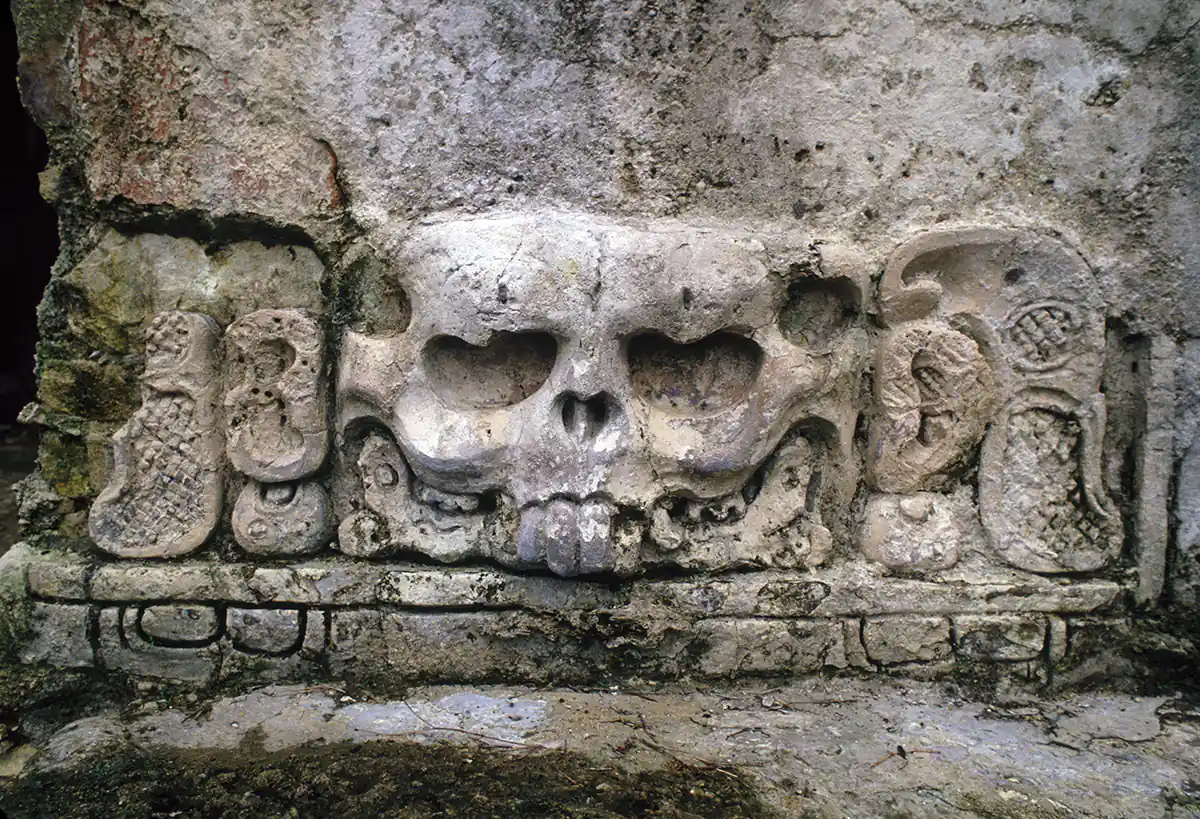Palenque
Vast, mysterious, and enchanting, the ruined city of Palenque is considered the most beautifully conceived of the Mayan city-states and one of the loveliest archaeological sites in the world. Its geographic setting is splendid beyond words. Nestled amidst steep and thickly forested hills, the ruins are frequently shrouded in thick mists. A cool stream meanders through the city center, and from the temple summits, there are spectacular views over an immense coastal plain. Here and there, piercing the dark green forests, soar great pyramids, towers, and sprawling temple complexes. Palenque was even more beautiful in its cultural florescence period, for its limestone buildings were coated with white plaster and painted in a rainbow of pastel hues. Hidden deep in the jungle, the ruin's existence was unknown until 1773. Even then, Palenque was rediscovered and lost several times until 1841 when the explorers John Lloyd Stephens and Frederick Catherwood introduced this jewel of Mayan architecture to the world with their evocative writings and drawings.
Scattered pottery shards show that the site was occupied from as early as 300 BC, but most buildings were constructed between the 7th and 10th centuries AD. Then, mysteriously, the great city was abandoned and reclaimed by the relentless claws of the jungle. Even the Mayan name of the city was lost, and the ruins received their current name from the nearby village of Santo Domingo de Palenque. While the ruins have received some of the most extensive excavation and reconstruction efforts of any Mayan sites, only 34 structures have been opened, of an estimated 500 scattered around the area. As one wanders through the ruins or gazes from atop the tall buildings, small hills are seen everywhere about the site. These are not hills, however, but Mayan structures that are long overgrown with jungle.
The photograph shows an extensive building complex, which archaeologists named 'the Palace.' Portions of the building may have been used as residences for the high priests and the aristocracy, but it is also believed that the complex served as an administrative center for the once-bustling city. Rising four stories above the palace is an astronomical observatory, its structural type unique in the Mayan world. On the day of the winter solstice from the tower, an observer will see the sun set directly over the Temple of the Inscriptions. Originally, this tower did not have a roof. Early archaeologists reconstructing the site, ignorant of the Mayans' sophisticated astronomical knowledge, did not understand the purpose of a roofless platform (for viewing the stars) and thus capped it with a roof of their own design.

Martin Gray is a cultural anthropologist, writer and photographer specializing in the study of pilgrimage traditions and sacred sites around the world. During a 40 year period he has visited more than 2000 pilgrimage places in 160 countries. The World Pilgrimage Guide at sacredsites.com is the most comprehensive source of information on this subject.
